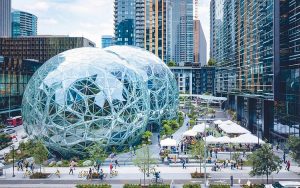Paving the Path to Eco-Cities: Real Estate’s Sustainable Impact
Introduction:
Greetings, I’m David Simon, a seasoned real estate expert with over two decades of experience navigating the ever-evolving urban landscape. In this enlightening exploration, we’ll delve into how the real estate industry is leading the charge toward eco-cities through sustainable practices. Join me as we journey through the world of eco-friendly construction, community-centric designs, and the pivotal role of sustainable real estate in shaping greener, more resilient cities.
The Urban Imperative
As our world becomes increasingly urbanized, the quest for sustainable urban development takes center stage. Cities are hubs of economic activity and innovation, but they also bear the brunt of environmental challenges. Real estate, as a cornerstone of urban infrastructure, plays a central role in the mission to create eco-friendly cities that can withstand the challenges of the future.
Sustainability in Real Estate: Beyond Rhetoric
Sustainability in real estate transcends mere rhetoric. It encompasses a comprehensive approach that integrates eco-friendly building practices, resource efficiency, and community well-being. Here’s a closer look at the key elements that define sustainable real estate:
Eco-Friendly Construction
Sustainable real estate embraces eco-friendly construction practices that reduce energy consumption, minimize waste, and harness renewable resources. Features such as solar panels, energy-efficient insulation, and rainwater harvesting systems are becoming standard in eco-conscious urban developments.
Community-Centered Designs
The concept of “smart cities” extends to creating communities that are not only technologically advanced but also livable, walkable, and inclusive. Sustainable urban developments prioritize mixed-use spaces, green corridors, and efficient public transportation to reduce congestion and improve the quality of life for residents.
Environmental Resilience
In an era of climate change and natural disasters, sustainable real estate incorporates resilient designs that can withstand extreme weather events. These designs enhance the safety of urban areas, reduce vulnerability, and ensure the well-being of city dwellers.
The Impact of Sustainable Real Estate
The influence of sustainable real estate reaches far and wide:
Economic Prosperity
Sustainable urban developments attract businesses and investments, spurring economic growth and job creation. Additionally, energy-efficient buildings translate into reduced operational costs, benefiting both commercial and residential property owners.
Environmental Benefits
Eco-friendly real estate practices significantly reduce greenhouse gas emissions, conserve resources, and mitigate pollution. This contributes to a healthier planet and helps combat the effects of climate change.
Improved Quality of Life
Community-centric designs prioritize green spaces, recreational areas, and accessible public services. These elements enhance the overall quality of life for urban residents, fostering well-being and happiness.

The Path Forward: Collaboration and Innovation
The journey toward eco-cities relies on collaboration and innovation:
Public-Private Partnerships
Successful sustainable real estate projects often result from collaborations between governments, private developers, and community stakeholders. These partnerships combine diverse expertise and resources to create vibrant, eco-friendly urban spaces.
Technological Advancements
Innovative technologies, such as smart grids, IoT (Internet of Things) devices, and data analytics, play a pivotal role in sustainable urban development. These tools enable more efficient resource management, improved transportation systems, and enhanced urban planning.
Expert Insights: Dr. Elena Martinez, Urban Sustainability Scholar
To gain deeper insights into the role of real estate in sustainable urban development, I had the privilege of speaking with Dr. Elena Martinez, a distinguished urban sustainability scholar and author of several pioneering studies on sustainable cities.
Dr. Martinez emphasized the need for integrated planning, stating, “Sustainable urban development demands a holistic approach that takes into account environmental, social, and economic dimensions. Real estate is instrumental in shaping the physical and social fabric of our cities.”
Conclusion: Paving the Path to Eco-Cities
As urbanization continues its relentless march, the real estate industry’s role in crafting eco-cities has never been more crucial. It’s not just about constructing buildings; it’s about building communities, preserving the environment, and securing a brighter, more sustainable future for all.
Sustainable real estate stands as the cornerstone of urban development in the 21st century. By embracing eco-friendly practices, community-centric designs, and fostering innovation through collaboration, we can pave the way to eco-cities that are not only thriving economically but also environmentally responsible and socially inclusive.



